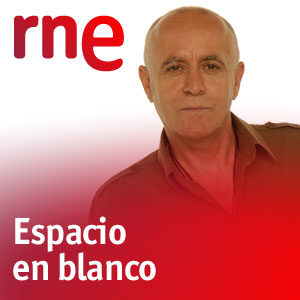|
Collage made out of several Saturn V launches during the Apollo missions. The sound is a remix of NASA audio recordings. Enjoy! |
Web personal de Yvan Figueiras Ruiz y su obra literaria
|
Collage made out of several Saturn V launches during the Apollo missions. The sound is a remix of NASA audio recordings. Enjoy! |
 There are islands that seen to play cat and mouse with sailors. Islands that are inscribed in maps for a long time untiel it is confirmed that they do not really exist. On occasion they are called “ghost islands”, the same that happens to boats and ships with crews that vanish without leaving a trace, creating al kind of speculation.
There are islands that seen to play cat and mouse with sailors. Islands that are inscribed in maps for a long time untiel it is confirmed that they do not really exist. On occasion they are called “ghost islands”, the same that happens to boats and ships with crews that vanish without leaving a trace, creating al kind of speculation.
To dive deep into these amazing topics, we talk to the writer and commercial diver Yvan Figueiras, author of the book “Enigmas y Misterios de la Mar”, who will tell us about the Caleuche, the mysterious freighter Ourang Medan or the adventures of the ship-of-the-line San Telmo in Anctarctica
In the department of islands we couldn’t miss Saint Brendan, the 8th o 9th of the Canary Archipelago, Sandy Island or the Auroras. Fernando López del Oso will tell us about pumice isles in the Pacific Ocean and Carlos Canales will mention islet Podestá and Ferdinandea, a volcanic island submerged (or not) in the Mediterranean.
Audio Player

Going back to La Rosa de los Vientos is like being back home after a long journey, because to Silvia Casasola & Bruno Cardeñosa. Thank you for some funny radio moments talking about the enigma and misteries of the sea.
Audio Player

Teacher, friend and the best travel companion. Sharing moments on the radio with Miguel Blanco is one of these gilty pleasures of life, this time talking about a sea of mysteries.
Audio Player
Audio Player
|
The soviet success in putting not one, but satellites in earth orbit in less than a month started a general anxiety among US citizens. It looked as in any moment a nuclear bomb could fall over their heads. Anyway, there was an apparent huge gap in military technology between both countries… Well, no. Both countries where paired. In fact Wernher von Braun’s and his team had been prohibited to attempt to launch any satellite, in spite of having the capabilities to do so a year before Sputnik was flown. But nothing stopped the fear, fueled by a disinformed and sensationalistic media. Eisenhower’s answer was to be the Vanguard, a satellite/rocket civil project meant to show US citizes that their country was up to the challenge. The problem was that it all blew up to the sky… literally. |
|
A month after changing history with their Sputnik, Soviet engineers, led by Sergei Korolev, once again surprised the world. This time it was not a simple ball with a radio; they had managed to put a living being into orbit: the dog Laika. We will learn how and why it was decided to sacrifice Laika at the same time that we will clarify some of the myths and lies that even today continue to hide what really happened before and after the Sputnik 2 mission. Laika was not –far from it– the first living being to reach space, which is not the same as entering orbit. We will know something about other animals, such as monkeys or dogs that were released beyond the Karman line before the Russian dog; some managed to return, although many were not so lucky. Laika had led the way. It wouldn’t take long for her to be followed by a human. |
|
Today we begin with the official start of the Space Race, the launch of Sputnik 1 on October 4, 1957, the event that changed history forever. But first we will try to understand how the Soviets, who had barely gained access to Nazi missile technology, managed in a very short time and without outside help to surpass von Braun’s designs and his team from Peenemünde. We will get to know the mysterious character of the “Chief Designer”, the alias that hid the true identity of the great Sergei Korolyov, who would not be known in the West or in the Soviet Union itself until his death in 1966 and the process of creating his R-7, the first rocket to place an artificial object in orbit. And of course, Sputnik. That glowing sphere with antennae that just beeped, but changed the world while creating widespread hysteria in the West. See you up there! Acknowledgements: Mercedes Pullman |
|
We have reached the Moon! Now it’s time to get out of the ship and explore. Or as they say in jargon: extravehicular activity. We’ll take some samples, plant the flag (yes, the one that does NOT wave) and do a little science. Missions 15 to 17 carried a lunar rover, which allowed them to expand their exploration radius; We will see how such a curious vehicle worked. After finishing our activity, we just have to pack up our gear, do some last minute science… and return to Earth. We will learn what it was like to take off from the Moon, the rendezvous in orbit with the Command and Service Module (CSM) and the return trip. To round it off, the infernal re-entry, the splashdown… and the ticker tape parade. Now that we have seen the end, next week we will start at the beginning: Sputnik. See you up there! |
|
The second part of our example mission to the Moon begins in parking orbit around the Earth. From there we will carry out the Translunar Injection, which will take us –if all goes well– to the far side of our satellite. Along the way we will learn the different maneuvers and procedures used by astronauts and Mission Control, while understanding some of the jargon of this type of business. All that remains is to start the descent, land on the moon, plant the flag and say a few words, but we will leave the latter for the last chapter of the series. We hope you enjoy these more than 300,000 km of flight. Remember that if you want to subscribe you have to pet the cat… See you up there! |
|
With images obtained from NASA and through 3D animations we have tried to recreate a complete Apollo lunar mission, using various moments of each real mission, from the ill-fated Apollo 1, to the last to reach our satellite, Apollo 17. This video is the prologue to our new series on the space race. Only that in order to better understand that piece of our History we have preferred to start at the end, so we can clearly see what the goal really was. Comments are welcome, as well as suggestions on any topic related to the Space Race that you would like us to cover in future documentaries. We hope you enjoy. See you up there! |